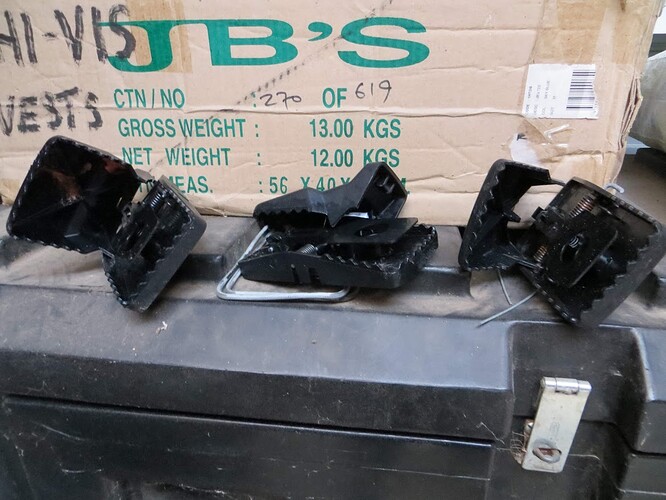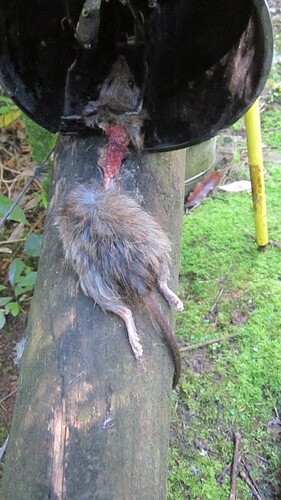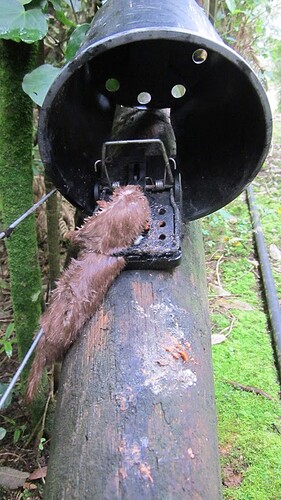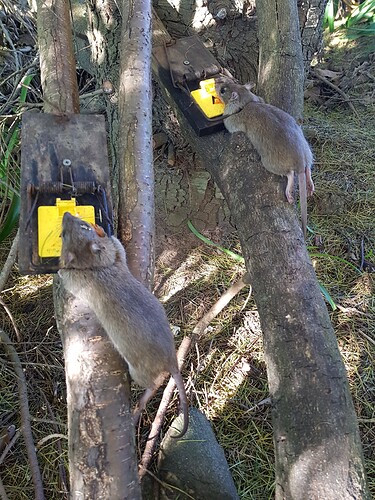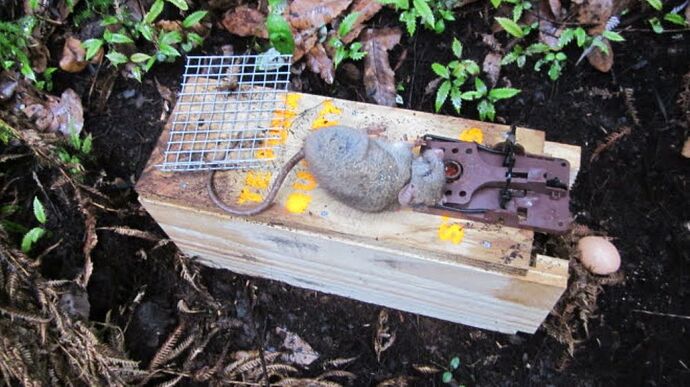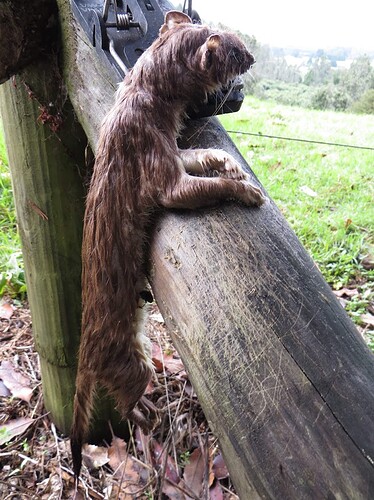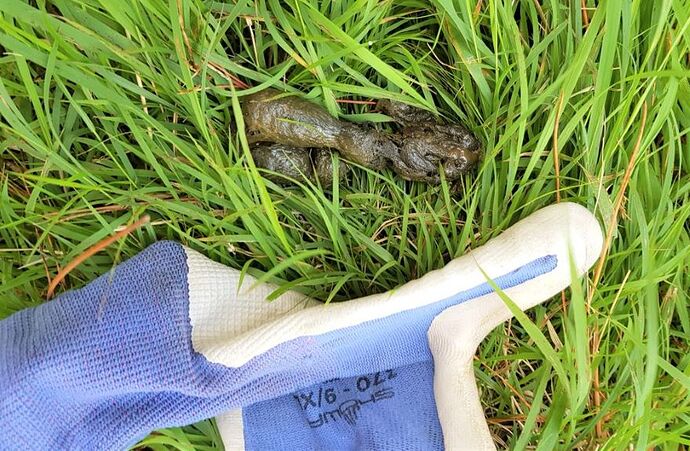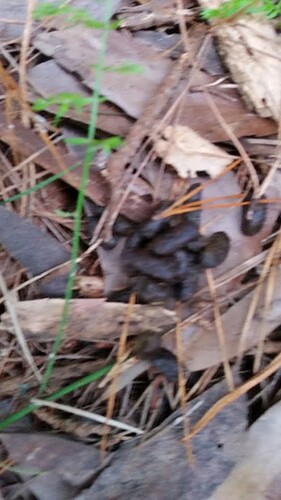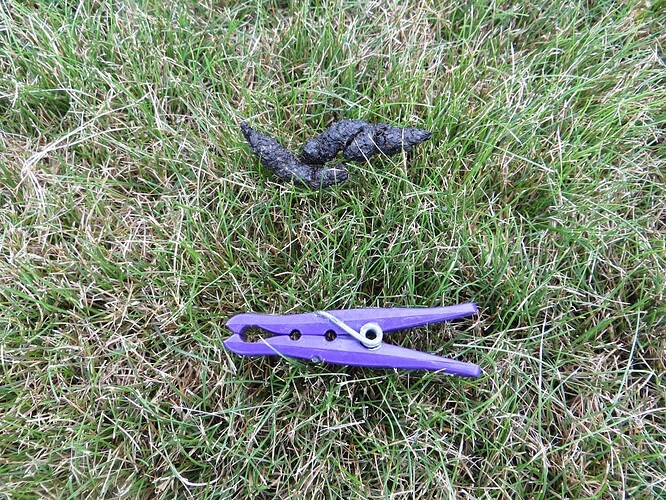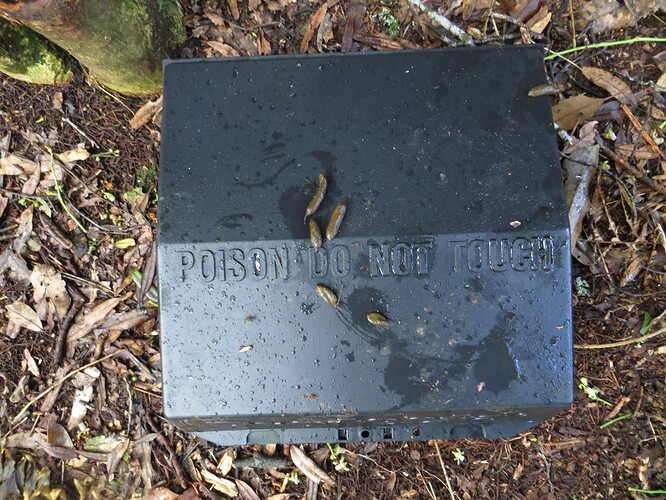Great work on the ferrets!
The brown rats here are often the size of my forearm, weighing up to 500g. Some of them can be very difficult to trap. Winter after winter, they burrow under our deck, seeking shelter while they attempt to chew their way up to the pantry.
The smooth kill-bar on Victors and other snap-traps, allow some predators to pull or shake themselves free. To make these traps more humane and reduce escapes, you can drill nails or screws at the front of the trap to impale predators. Also, since I mounted down my snap-traps with screws, they’ve become both more humane, and they don’t get damaged, because predators can’t thrash around inside my tunnels.
Trying out a few T-Rex/Tomcat traps might be a good idea. Mine have killed at least one hundred large browns since I started trapping a few years ago, with only 1 dirty kill. I don’t know how the plastic will do when it’s exposed to saltwater, though.
If you can find it, I think that tallow (rendered fat) would be the perfect lure for your mudflat traps. In addition to the fact that saturated fat is very appealing to predators, tallow is hydrophobic, so water just beads off of it, making it perfect for wet environments. It doesn’t contain water, so it doesn’t go moldy, and it doesn’t rot. Blowflies and wasps ignore it, unlike flesh lures.
Tallow will go rancid, eventually, but I would be very surprised if it lasted long enough without being eaten for that to happen. Rancid tallow wouldn’t necessarily be a bad thing, because predators investigate rancid fat to see if any good fat remains. Tallow is both cheap and can last for up to a year in the fridge.
Unfortunately, ants and cockroaches are both fans of tallow, and there may be more that I’m not aware of. Because it’s greasy in warm/hot weather, it isn’t as easy for insects to eat tallow, at least. Some bird species may be attracted to tallow, but after 18 months using it 30 tunnels, I have yet to trap a bird with it.
Goodnature’s Meal Lovers’ Lure is another good option, because it’s long-lasting, water-resistant, and insects aren’t attracted to it (in my experience). The predators here love the stuff, and a sachet goes a long way, so it’s really economical.
The combination of tallow and Meat Lovers’ has been effective, because it signals that there’s a freshly killed, especially fatty animal to scavenge. Add a fake egg, and you’ve got yourself a very attractive trap.
Do you use DOC traps, too?
Good luck trapping those brown bastards.
Cheers.
